How to Fit a New Toilet
Update the look of your bathroom, or replace a faulty fixture with our step-by-step guide to fitting a toilet
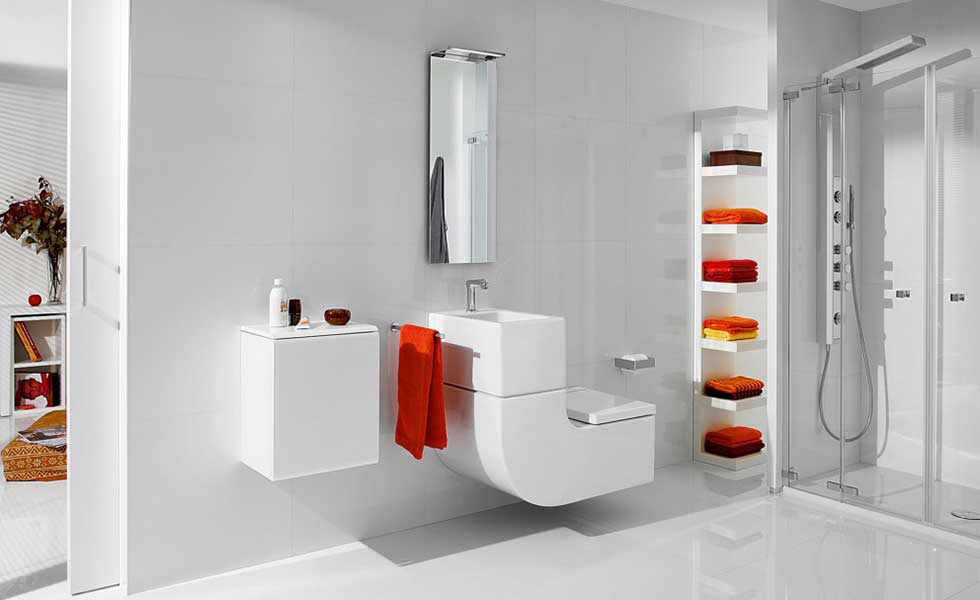
If you are stuck with an old fashioned toilet that leaks, is noisy and uses far more water than is necessary, it sounds like it is time to install a new, twin-flush model. Not only will it save you money in the long term, but you can also fit it yourself saving even more pennies.
There are several major benefits to fitting a modern twin-flush toilet in your bathroom or cloakroom. Not only will you will instantly improve and update the look of the room, but you wont have to put up with the noise or frequent leaks that seem to come as standard with some older models whats more, you could even save yourself some money along the way.
The toilet is the biggest overall water user in your home, accounting for a third of all the water you get through. An old model of cistern can use ten to 13 litres of water per flush, but a modern twin-flush can use as little as four litres on the short flush and six litres on the long flush.
If you are on a water meter you’ll be saving cash from the first flush of your new toilet. And, whether you’re on a meter or not, just think how much less water you’ll be draining from those ever-depleting reservoirs every time you relieve yourself.
Before you purchase a new toilet, be sure to check with the supplier that it has an internal overflow feature. This device means that if the fill valve develops a fault whereby it won’t stop filling the cistern, the extra water goes straight into the pan and drains away down the waste pipe. The result is that you can do away with the extra pipe that takes any overflow water away from your current toilet.
Tool List
- Adjustable spanner
- Pencil
- Tape measure
- Drill
- Masonry drill bits
- Tile drill bits or glass drill bits
- Spirit level
- Long flat-bladed screwdriver
- An assistant for steps six and nine
- Plastic pipe cutter
- Copper pipe cutter
Materials Needed
- Twin-flush toilet
- Plastic pipe (15mm)
- Threaded toilet connector
- 15mm plastic pipe connectors as necessary
- 15mm pipe inserts
- Masking tape
- Two 50mm number 8 screws
- Rubber washers
- Wall plugs
- Toilet feed connector with shut off valve
Installing a toilet away from the main waste pipe: If you want to install a toilet in a new en suite, routing the waste away can be a problem. A standard toilet waste pipe is 100mm in diameter.When a house is built its relatively straightforward to route this large bore pipe from the toilets to the drain, but with all the internal walls up, routing a pipe to a room newly designated for a toilet is difficult. To get around this may people fit a macerator/ shredder on the back of the toilet. The unit sits behind the pan and pumps the waste away in a pipe just 22mm in diameter. Small piping is easy to box in or run between floorboard joists.
Fitting a macerator isn’t difficult but because there are electrical connections involved and the area you are installing it in is restricted under Part P of the Building Regulations, you will need to employ an electrician to wire it in. A macerator costs from £200, an electrician will charge around £50 for the wiring.
Step-by-step
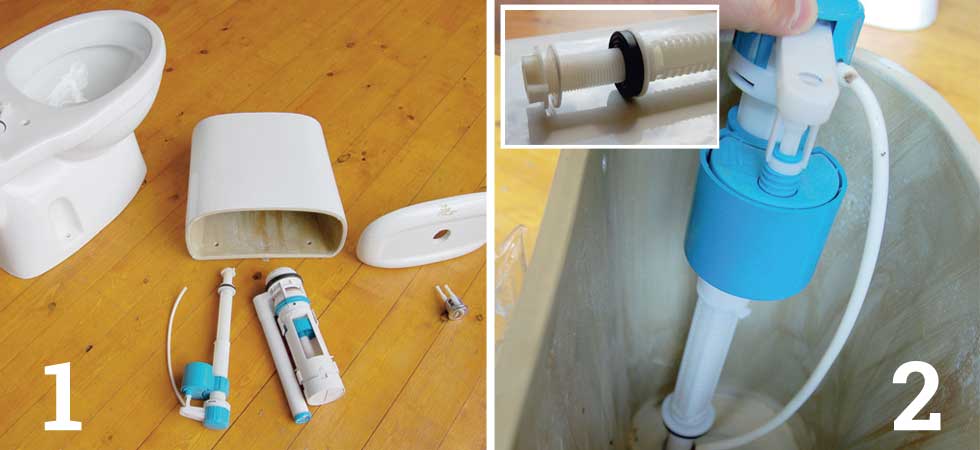
1. Unpack and check the components. You should have (clockwise from left): the pan with pan-to-cistern sealing ring and connecting bolts on top; cistern; cistern lid; flush button; flush valve; and fill valve. These parts are from a close-coupled toilet (where the cistern sits directly on top of the pan), but other twinflush systems use very similar components.
2. Put the fill valve into the cistern. Make sure the thick rubber washer goes on the inside and the plastic washer on the outside (INSET PIC). Hand-tighten the securing nut and then nip up with an adjustable spanner.
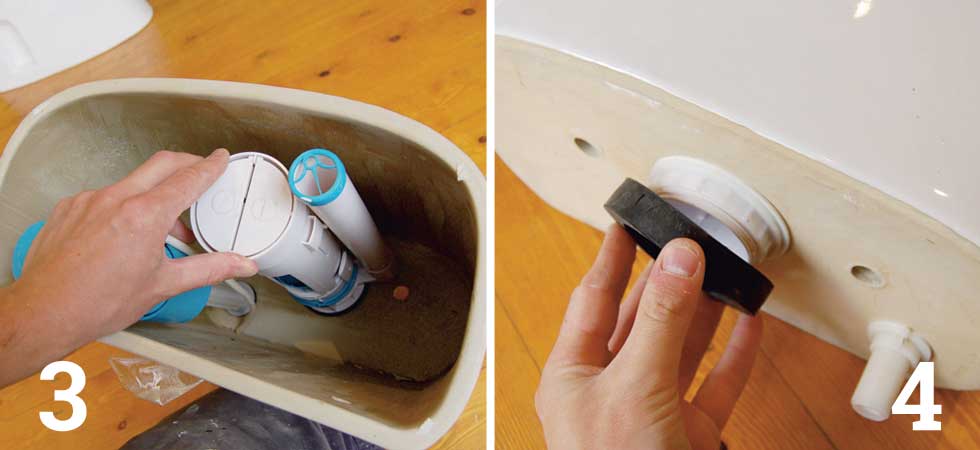
3. Now put the flush valve into the cistern. Be careful not to obscure the cistern-to-pan bolt holes and ensure the rubber washer goes on the inside and the plastic washer on the outside. Hand-tighten the nut and nip up with an adjustable spanner.
4. Push the pan-to-cistern sealing ring over the retaining nut and threads of the flush valve underneath the cistern.
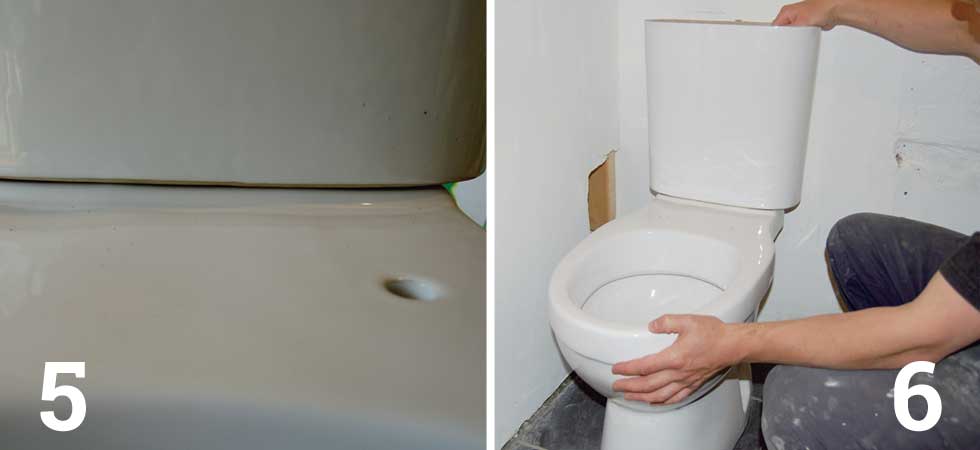
5. Put the cistern on top of the pan, push the connecting bolts through and tighten the nuts. The rubber washers on the bolts must go on the inside of the cistern, the plastic washers on the outside. Check everything is aligned and, holding the nuts with an adjustable spanner, tighten the bolts down a little at a time using a long flat-bladed screwdriver to turn them. On a close-coupled toilet the bolts should pull the cistern down as shown in the picture.
6. The toilet is now ready to be moved into place. Because the bolts just pinch the cistern and pan together for water tightness, rather than structural rigidity, the assembly is actually quite weak until it is screwed to the wall and floor. Its also pretty heavy. Get someone to help you move the pan and cistern. Once its roughly in position, send the assistant off to make some tea and make the final adjustments so the pan will line up with your existing waste pipe. Ideally you want a clear 600mm square area forward of the pan for comfortable seating.
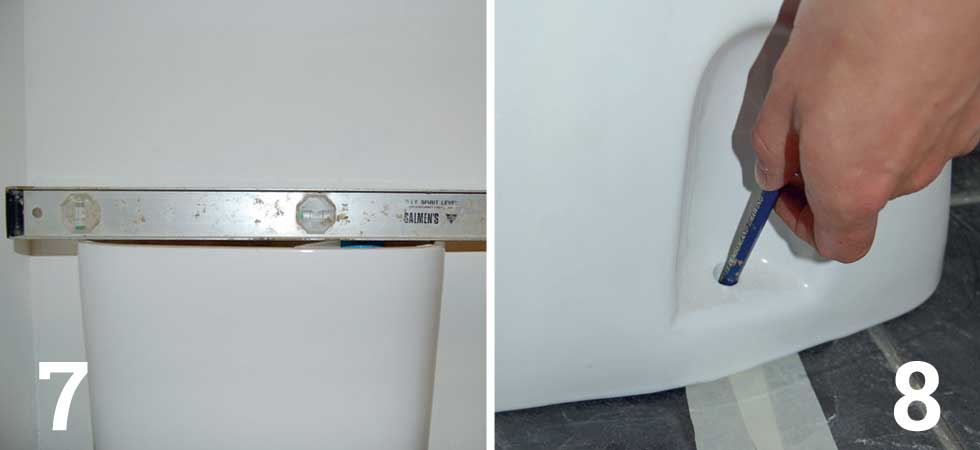
7. Check the toilet is level.
8. Mark the mounting holes through the back of the cistern onto the wall and through the base of the pan onto the floor. If you are marking onto a dark surface, put some masking tape behind the cistern or under the pan to help the marks show up. Tape also stops the drill from skittering when drilling through tiles.
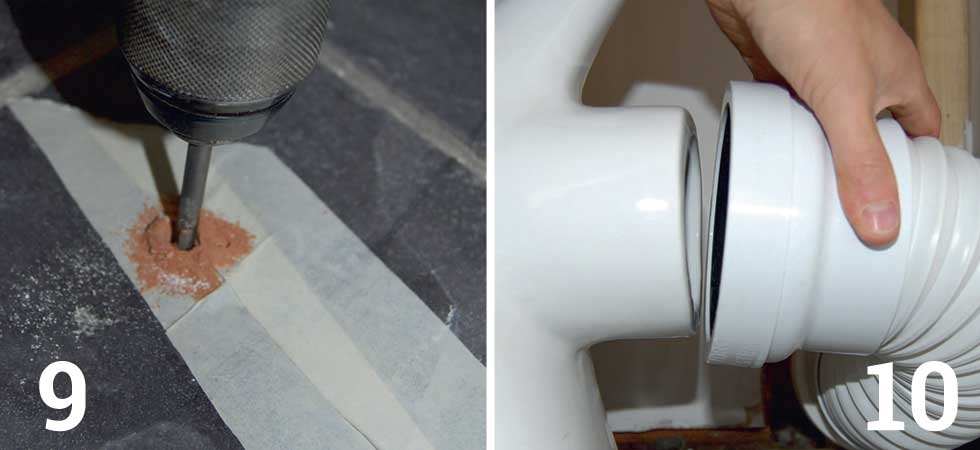
9. Call your assistant back and get them to help you move the toilet out of the way. Drill the holes. If you are drilling into tiles you can buy a special tile drill kit from most DIY stores for about £12. A cheap and effective alternative is to buy a drill bit that’s designed to go through glass for about £4 (INSET).When drilling through tiles, keep the drill on its lowest speed setting. Fill the holes with plastic wall plugs.
10. Reposition the pan so it lines up with the waste pipe and connect the two together. Cleaning up the waste pipe connector and lubricating with a little soapy water makes the connecting process easier.
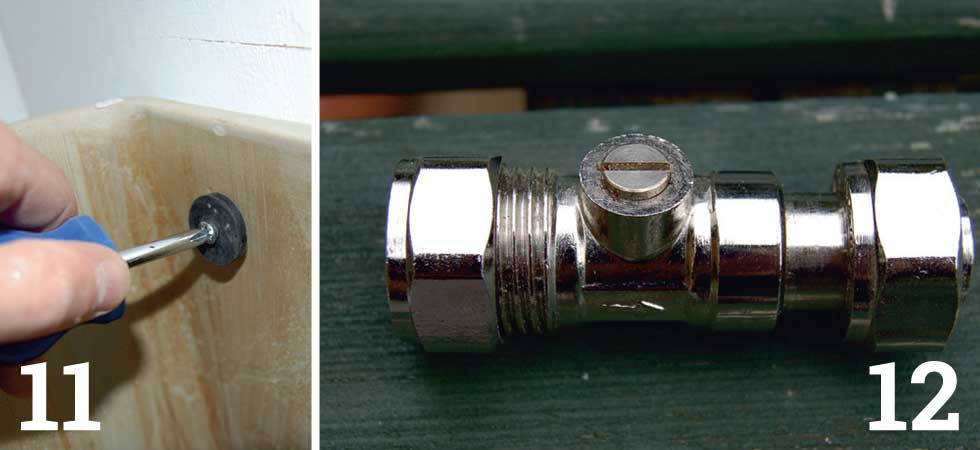
11. Screw the toilet to the floor and wall. Most loos come with screws and caps to secure the pan to the floor, but you may not get anything to secure the cistern to the wall. A pair of rubber washers available from any DIY store help to cushion the screws against the ceramic cistern. The washers also stop the screws pulling through holes that are normally bigger than the average screw head. Dont over-tighten the screws you risk cracking the ceramic cistern and pan.
12. You may need to re-route the cold water supply. First, screw on a new toilet feed connector to the threaded section of the fill valve that protrudes below the cistern. This one has a built-in shut-off valve so you can turn the water supply off in an emergency without affecting other fittings and appliances.
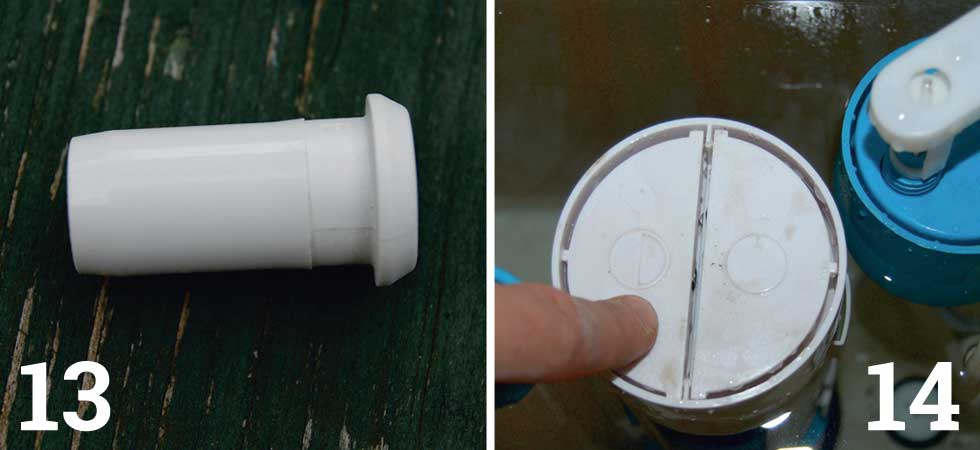
13. Turn off the water at the stop cock (often below the kitchen sink). Run pipe from the old feed position to suit the new toilet. This may entail chopping back the old pipe in order to get a straight run to connect up to. If you use plastic pipe and want to join into the metal connector shown in picture 12, you must use a plain pipe insert in the end of the pipe. This allows the olive in the connector to crush and grip the plastic pipe to prevent leaks. For other plastic-to-plastic connections (tees, straights and elbows), you can use the standard insert.
14. Once you have made your connections, turn the water on and check for leaks. Test the twin flush. The button on the left is the short flush, the button on the right, the long flush.
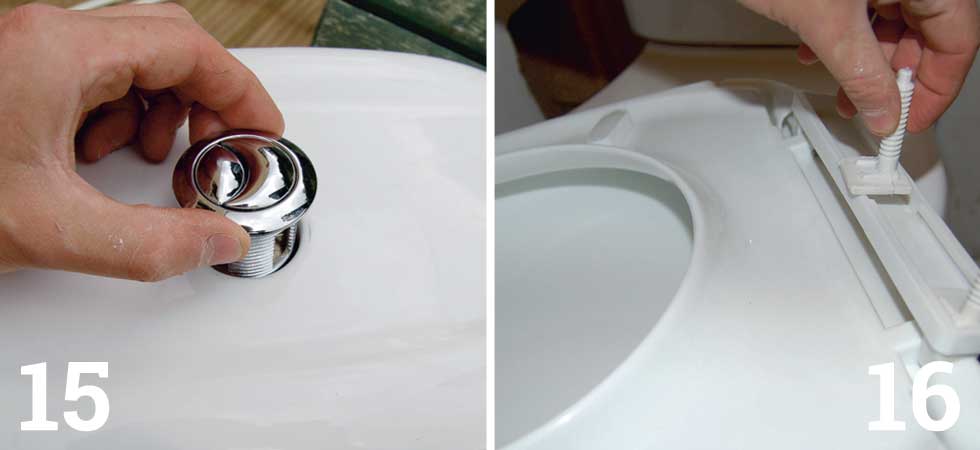
15. Push the flush button through the cistern lid. Before you tighten up make sure the buttons correspond with the short- and long-flush buttons on top of the flush valve. Now fit the cistern lid and check the toilet flushes correctly.
16. Assemble, fit and tighten the toilet seat. Have a clean up and the jobs done.
Get the Homebuilding & Renovating Newsletter
Bring your dream home to life with expert advice, how to guides and design inspiration. Sign up for our newsletter and get two free tickets to a Homebuilding & Renovating Show near you.
Ben is a writer and a keen DIYer, and has undertaken a multiple of tasks from installing loft insulation, tiling, painting windows to fitting garden fences and reviving period fireplaces. He has also converted his loft on a DIY basis.
